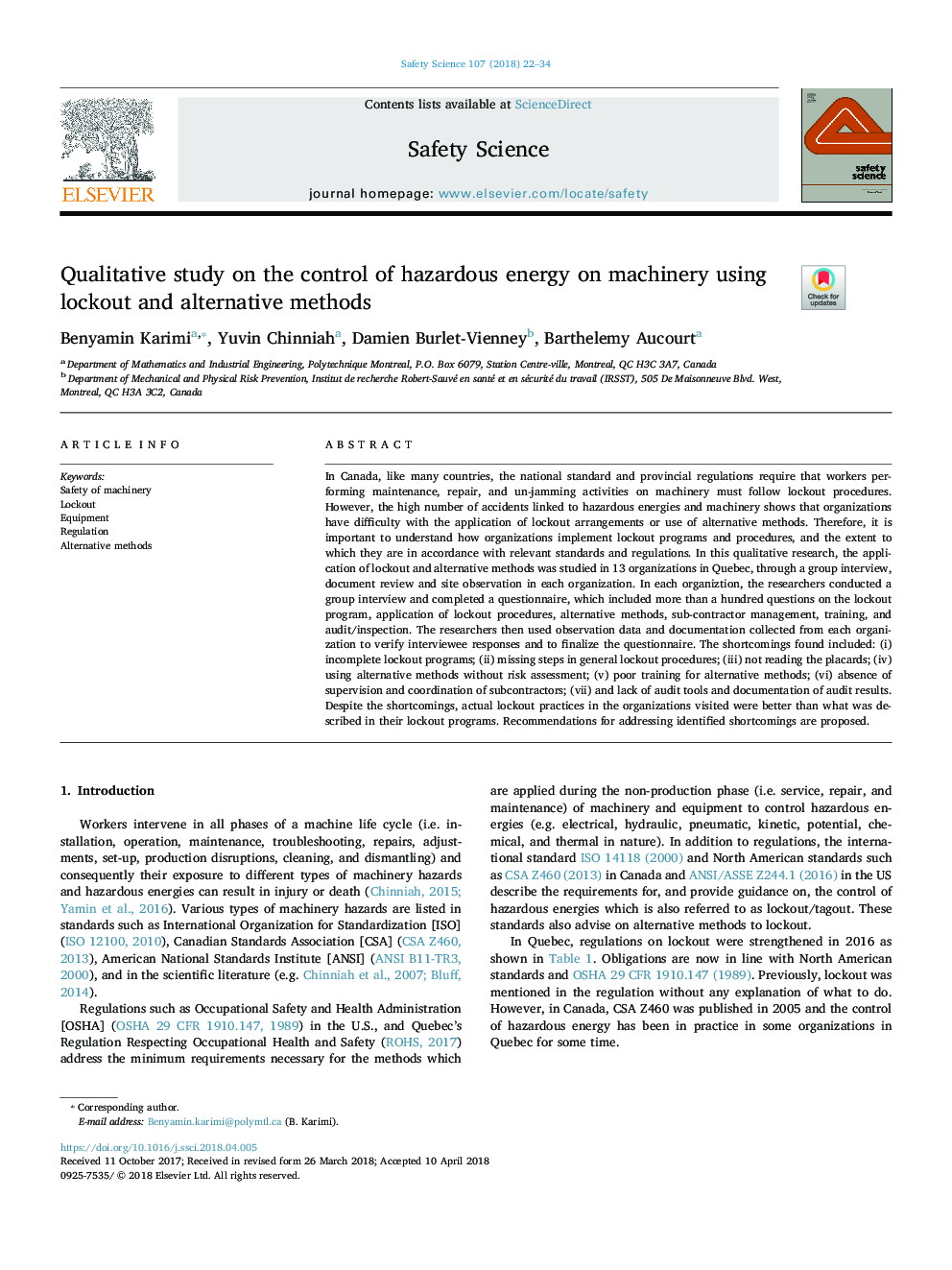| Article ID | Journal | Published Year | Pages | File Type |
|---|---|---|---|---|
| 6974826 | Safety Science | 2018 | 13 Pages |
Abstract
In Canada, like many countries, the national standard and provincial regulations require that workers performing maintenance, repair, and un-jamming activities on machinery must follow lockout procedures. However, the high number of accidents linked to hazardous energies and machinery shows that organizations have difficulty with the application of lockout arrangements or use of alternative methods. Therefore, it is important to understand how organizations implement lockout programs and procedures, and the extent to which they are in accordance with relevant standards and regulations. In this qualitative research, the application of lockout and alternative methods was studied in 13 organizations in Quebec, through a group interview, document review and site observation in each organization. In each organiztion, the researchers conducted a group interview and completed a questionnaire, which included more than a hundred questions on the lockout program, application of lockout procedures, alternative methods, sub-contractor management, training, and audit/inspection. The researchers then used observation data and documentation collected from each organization to verify interviewee responses and to finalize the questionnaire. The shortcomings found included: (i) incomplete lockout programs; (ii) missing steps in general lockout procedures; (iii) not reading the placards; (iv) using alternative methods without risk assessment; (v) poor training for alternative methods; (vi) absence of supervision and coordination of subcontractors; (vii) and lack of audit tools and documentation of audit results. Despite the shortcomings, actual lockout practices in the organizations visited were better than what was described in their lockout programs. Recommendations for addressing identified shortcomings are proposed.
Related Topics
Physical Sciences and Engineering
Chemical Engineering
Chemical Health and Safety
Authors
Benyamin Karimi, Yuvin Chinniah, Damien Burlet-Vienney, Barthelemy Aucourt,
